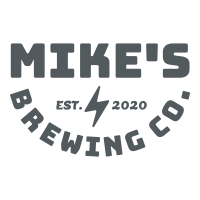Brew Log History
Ambient: {{ stats.ambient | number:0 }} °F
OG: {{ stats.ogGravity | number:3 }}
Attenuation: {{ stats.attenuation | number:2 }}%
Calories: {{ stats.calories | number:1 }} / 12oz
Carbs: {{ stats.carbs | number:1 }} g / 12oz
Readings: {{ readingsCount | number }}
{{ formatHeaderDate(dates.navStart) | date:'mediumDate' }} to {{ formatHeaderDate(dates.navEnd) | date:'mediumDate' }}
Last Updated: {{ stats.lastupdated.ago }} from {{ stats.lastupdated.source }}
Hops
|
Amount
|
Variety
|
Cost
|
Type
|
AA
|
Use
|
Time
|
IBU
|
Bill %
|
|
1 oz |
Motueka1 oz Motueka Hops |
|
Pellet |
7 |
Boil
|
60 min |
21.07 |
22.2% |
|
1 oz |
Northern Brewer1 oz Northern Brewer Hops |
|
Pellet |
7.8 |
Boil
|
60 min |
23.47 |
22.2% |
|
1 oz |
Spalt1 oz Spalt Hops |
|
Pellet |
4.5 |
Boil
|
20 min |
8.2 |
22.2% |
|
0.50 oz |
Northern Brewer0.5 oz Northern Brewer Hops |
|
Pellet |
7.8 |
Boil
|
20 min |
7.11 |
11.1% |
|
1 oz |
Perle1 oz Perle Hops |
|
Pellet |
7.8 |
Boil
|
0 min |
|
22.2% |
|
4.50 oz
/ $ 0.00
|
Hops Summary
|
Amount
|
Variety
|
Cost
|
IBU
|
Bill %
|
|
1 oz |
Motueka (Pellet) 0.99999999771257 oz Motueka (Pellet) Hops |
|
21.07 |
22.2% |
|
1.50 oz |
Northern Brewer (Pellet) 1.4999999965689 oz Northern Brewer (Pellet) Hops |
|
30.58 |
33.3% |
|
1 oz |
Spalt (Pellet) 0.99999999771257 oz Spalt (Pellet) Hops |
|
8.2 |
22.2% |
|
1 oz |
Perle (Pellet) 0.99999999771257 oz Perle (Pellet) Hops |
|
|
22.2% |
|
4.50 oz
/ $ 0.00
|
Mash Guidelines
|
Amount
|
Description
|
Type
|
Start Temp
|
Target Temp
|
Time
|
|
15.75 qt |
Strike snd raise to 158 degrees for rest. |
Infusion |
-- |
140 °F |
20 min |
|
|
Rest |
Decoction |
-- |
158 °F |
60 min |
|
12.25 qt |
|
Fly Sparge |
-- |
168 °F |
-- |
Starting Mash Thickness:
1.5 qt/lb
|
Other Ingredients
|
Amount
|
Name
|
Cost
|
Type
|
Use
|
Time
|
|
7 g |
Calcium Chloride
|
|
Water Agt |
Mash |
1 hr. |
|
1 tsp |
Beer Nutrient
|
|
Other |
Boil |
10 min. |
|
1 each |
Whirlfloc Tablet
|
|
Fining |
Boil |
5 min. |
Target Water Profile
Balanced Profile
Notes
https://byo.com/article/california-common-style-profile-2/
The only specialty malt you really need for California common is crystal malt. You want to build a gentle but clearly evident caramel flavor and color. Use a mid-color crystal malt between 30 and 70 °L for up to 10% of the grist. If you want to develop more of a toasty/biscuity character, you can add a small percentage (< 5%) of toasted malts, such as Victory, biscuit or even pale chocolate. Pale chocolate (200–250 °L) imparts a more intense dark toasty note, which I like in this beer. If you use pale chocolate, keep it to a minor addition, around 1%. Stay away from malts darker than pale chocolate or use them in only the tiniest of amounts for color correction, not flavor. You do not want a roast character to come through in the beer. In general, keep the total of all specialty grain additions to less than 15%.
While there are some examples out there that use other hop varieties, making a beer similar to Anchor Steam requires Northern Brewer hops. If you want to experiment, avoid highly citrusy or fruity hops as they will overshadow the fermentation character, which is so important to this style. Finding other hop varieties that fit a judge’s vision of California common can be tough. You will want to look for varieties that give a woody, earthy, or perhaps a spicy hop character. I have always thought Spalt would work well, with its interesting spicy and somewhat rustic character. You might also experiment with Cluster, Nugget, Perle, Santiam, Tettnanger or Liberty. Historically the hops would most likely have been California-grown Cluster hops.
When it comes to hop quantities, go bold on the flavor and aroma additions. It shouldn’t be overwhelming and turn into an IPA, but the hop character, along with hop bittering, should be full and readily apparent to the drinker. For flavor and aroma, add two or three later additions around 1⁄4 to 1/3 oz. per gallon (1 to 3 g/L). You can go lighter or heavier, just keep in mind the overall character you are trying to build. Target a bitterness-to-starting gravity ratio (IBU divided by OG) of 0.6 to 1.0.
A fermentation temperature of 62 to 64°F (17 to 18°C) gives the best result. Follow that up with a month of cold conditioning and carbonation approaching three volumes and it will help you come a little closer to matching that wonderful Anchor classic.

Last Updated and Sharing

- Public: Yup, Shared
- Last Updated: 2020-01-23 15:52 UTC
For quick copying and pasting to a text based forum or email.
Click the Download as HTML file button below.
Recipe costs can be adjusted by changing the batch size. They won't be saved but will give you an idea of costs if your final yield was different.
|
Cost $ |
Cost % |
| Fermentables |
$ |
|
Steeping Grains
(Extract Only) |
$ |
|
| Hops |
$ |
|
| Yeast |
$ |
|
| Other |
$ |
|
| Cost Per Barrel |
$ 0.00 |
|
| Cost Per Pint |
$ 0.00 |
|
| Total Cost |
$ 0.00 |
|
Discussion about this recipe:





